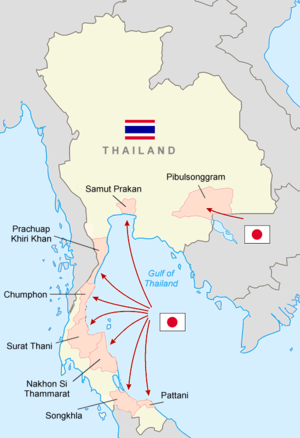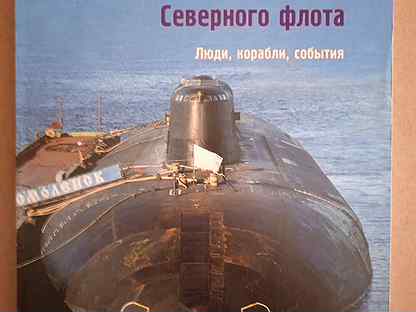
Japanese invasion of Thailand: December 8, 1941
Thai destroyer Phra Ruang, photographed in 1955. She was a Type R ship that served in World War I with the Royal Navy before being sold to the Royal Thai Navy in 1920.
Behind the scenes of the Combined Fleet attack on Pearl Harbor and a series of amphibious operations in Southeast Asia, one of the most important actions of the first phase of the Pacific War took place. The Japanese invasion of Thailand, although most of the fighting during it only lasted a few hours, ended with the signing of a truce and later an alliance treaty. From the outset, the Japanese goal was not military occupation of Thailand, but obtaining permission to transit troops across the Burmese and Malay borders and pressuring them to join a coalition against the European colonial powers and the United States.
The Empire of Japan and the Kingdom of Thailand (since June 24, 1939; formerly known as the Kingdom of Siam), seemingly completely different countries in the Far East, have one common denominator in their long and complex history. During the dynamic expansion of the colonial empires in the XNUMXth century, they did not lose their sovereignty and established diplomatic relations with world powers in the framework of the so-called unequal treaties.
The basic Thai fighter of 1941 is a Curtiss Hawk III fighter purchased from the USA.
In August 1887, the Declaration of Friendship and Trade was signed between Japan and Thailand, as a result of which Emperor Meiji and King Chulalongkorn became symbols of the two modernizing peoples of East Asia. In the long process of westernization, Japan has certainly been at the forefront, even sending a dozen of its own experts to Bangkok with the intention of supporting reform of the legal system, education, and sericulture. In the interwar period, this fact was widely known both in Japan and in Thailand, thanks to which both peoples respected each other, although before 1 there were no major political and economic ties between them.
The Siamese Revolution of 1932 overthrew the former absolute monarchy and established a constitutional monarchy with the country's first constitution and bicameral parliament. In addition to the positive effects, this change also led to the start of a civil-military rivalry for influence in the Thai cabinet. The chaos in the gradually democratizing state was taken advantage of by Colonel Phraya Phahol Pholfayuhasen, who on June 20, 1933 carried out a coup d'état and introduced a military dictatorship under the guise of a constitutional monarchy.
Japan provided financial support for the coup in Thailand and became the first country to recognize the new government internationally. Relations at the official level clearly warmed up, which led, in particular, to the fact that the Thai officer academies sent cadets to Japan for training, and the share of foreign trade with the empire was second only to exchange with Great Britain. In the report of the head of British diplomacy in Thailand, Sir Josiah Crosby, the attitude of the Thai people towards the Japanese was characterized as ambivalent - on the one hand, recognition of the economic and military potential of Japan, and on the other, distrust of imperial plans.
Indeed, Thailand was to play a special role in Japanese strategic planning for Southeast Asia during the Pacific War. The Japanese, convinced of the rightness of their historical mission, took into account the possible resistance of the Thai people, but intended to break them by force and lead to the normalization of relations through military intervention.
The roots of the Japanese invasion of Thailand can be found in Chigaku Tanaka's doctrine of "gathering the eight corners of the world under one roof" (jap. hakko ichiu). At the beginning of the XNUMXth century, it became the engine of developing nationalism and a pan-Asian ideology, according to which the historical role of the Japanese Empire was to dominate the rest of the East Asian peoples. The capture of Korea and Manchuria, as well as the conflict with China, forced the Japanese government to formulate new strategic goals.
In November 1938, the cabinet of Prince Fumimaro Konoe announced the need for a New Order in Greater East Asia (Japanese: Daitoa Shin-chitsujo), which, although it was supposed to focus on closer ties between the Empire of Japan, the Empire of Manchuria and the Republic of China, also indirectly affected Thailand. Despite declarations of a desire to maintain good relations with Western allies and other countries in the region, Japanese policymakers did not envision the existence of a second fully independent decision-making center in East Asia. This view was confirmed by the publicly announced concept of the Greater East Asia Prosperity Zone (Japanese: Daitōa Kyōeiken) announced in April 1940.
Indirectly, but through general political and economic plans, the Japanese emphasized that the region of Southeast Asia, including Thailand, should in the future belong to their exclusive sphere of influence.
At the tactical level, the interest in close cooperation with Thailand was associated with the plans of the Japanese military to seize the British colonies in Southeast Asia, namely the Malay Peninsula, Singapore and Burma. Already at the preparatory stage, the Japanese came to the conclusion that operations against the British require the use of not only Indo-China, but also Thai ports, airports and the land network. In the event of Thailand's open opposition to the provision of military installations and refusal to agree to a controlled transit of troops to the Burmese border, Japanese planners considered the need to dedicate some forces to enforce the necessary concessions. However, a regular war with Thailand was out of the question, as it would require too many resources, and a Japanese attack on the British colonies would lose the element of surprise.
Japan's plans to subjugate Thailand, regardless of the measures that were approved, were of particular interest to the Third Reich, which had its diplomatic missions in Bangkok and Tokyo. German politicians saw the appeasement of Thailand as an opportunity to withdraw part of the British troops from North Africa and the Middle East and unite the military efforts of Germany and Japan against the British Empire.
In 1938, Folphayuhasen was replaced as prime minister by General Plaek Phibunsongkhram (commonly known as Phibun), who imposed a military dictatorship in Thailand along the lines of Italian fascism. His political program envisaged a cultural revolution through the rapid modernization of society, the creation of a modern Thai nation, a single Thai language, the development of its own industry, the development of the armed forces and the construction of a regional government independent of the European colonial powers. During the reign of Phibun, the numerous and wealthy Chinese minority became an internal enemy, which was compared with the "Jews of the Far East." On June 24, 1939, in accordance with the adopted policy of nationalization, the official name of the country was changed from the Kingdom of Siam to the Kingdom of Thailand, which, in addition to laying the foundations of a modern nation, was to emphasize the inalienable right to lands inhabited by more than 60 million Thai ethnic groups living also in Burma, Laos, Cambodia and South China.

